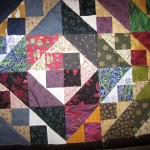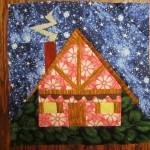My husband and I recently went to a book signing. There is this tiny little bookstore in Neenah Wisconsin.
When we arrived, there were chairs set up. There were crackers and cheese in the corner with some wine. I of course, refrained from the wine. (I would wait until later and have a beer).
There were two chairs at the front of the room. A table was set up in front of the chairs with the books that were featured that evening. Everyone went about sitting on chairs on the audience side. We waited for the authors and then they came in. I had no idea which books were being talked about, or what to expect. This was different than other book signings that I had been to (including my own) where the author sat on a stool at a table and just signed books.
I of course, was skeptical, and so I brought my laptop. I figured that if I got bored I could get a little work done in the meantime. Usually, I bring my knitting.
The two authors sat down. They introduced themselves. One was younger than I and the other, I imagined, was older. They discussed their histories. Well, maybe this wasn’t so bad. It was interesting so far. If you can write, then maybe you are good at talking as well.
As they discussed their origin stories, I noticed that their stories were no different than many of our origin stories. When I say our, I mean people in my life that create with their hands using fiber. This includes all of my customers. There were definite similarities. So, I began taking notes. I titled my notes “Creative Center”. The reason that I titled my notes in this way was because I had an epiphany sitting in the audience. Being a nurse and a shop owner, I consider myself to be a little bit of a scientist. Okay, I said a little bit. Being a quilter, knitter and shop owner always makes me think of fabric, color and creative endeavors. Being a nurse, on the other hand, makes me think of 1) How does the creativity affect health and 2) what part of the brain is responsible for all this creativity? And, is this unique to humankind? I am certain that there have been scientists that have studied this in the past.
I always tell my customers that color affects our brains in ways that we don’t understand, that it makes us feel high. Anyway, I decided that the Creative Center must be a region in the brain. Some people have a Creative Center that tells them to write. Some have a Creative Center that tells them to sing. Some have a Creative Center that tells them to make tables, chairs and furniture. Where is this little part in the brain? Which little clump or grouping of cells is it? It’s a conglomeration of synapses and neurotransmitters. But, what makes some people differentiate as quilters and some as musicians, some as writers, some as painters?
What I am talking about is different than a hobby. A hobby is like, birdwatching, for example. You are the recipient of collecting visual stimuli. Or, reading. That’s a hobby too. You take in a book and it is a private experience. I like to run (although you can’t tell it from the looks of me) and I consider that to be a deeply private hobby. I’m not sharing, it’s only for me. How about kayaking or boating? Okay. I don’t have to beat this to death with a stick.
The difference between a hobby and a creative pursuit is this: They both give you visceral pleasure but the creative endeavor also gives someone else pleasure or meaning.
The authors sitting before me were sharing their creative souls. This really makes you vulnerable. You are putting out something that comes from deep within your soul, and sharing it openly. This takes guts, and it takes patience. And, it also is a window into the evolution of someone’s Creative Center. We all change over time, and it is reflected in our product.
The other thing that struck my interest was that they were discussing whether or not they had a personal relationship with their characters. They said that they do. Even though they were fictional, they obviously developed a relationship with those characters. This was surprising to me. But then, I thought, why not? Don’t we all develop personal relationships with our fabric stashes, our quilts and our projects? I would be willing to bet that musicians have personal relationships with their compositions. And, a carpenter most definitely has personal relationships with the furniture that they make. I know. I’m starting to sound crazy. But the truth is we do. Whether we realize it or not, there are pieces of fabric that we acquire and have relationships with depending on our mood, and needs for the day. Here’s how it works.
There’s the “Love at First Sight” purchase. This is the fabric that when you enter the fabric shop you see it and you say “I love this! How can I ever live without this!” Somehow you have not selected it, but it has selected you. You take it home, and chances are, you won’t use it. And, when the time comes for using it, you will probably go out and buy a second piece so that you can save one just to have it. Who says you can’t have your cake and eat it too?
There’s the “I’m in a melancholy mood so I am going to the fabric store to buy something” purchase. It makes us feel better. This is the piece of fabric in our stash that was your therapist that day.
There’s the “My friend and I had this great idea….” purchase. Maybe you were shopping with your best quilty friend that day and you both decided you were going to do placemats, or table runners, or dresses for little girls. This piece of fabric acted as the activity director for the day.
There’s the purchase that was made because your child or grandchild had an outstanding coach or teacher. You just had to make them something with it. It’s the piece that acted as a relationship builder. You know, when you make something for someone, they will remember that forever and always look kindly at you.
So you see, we have a lot in common with these authors. There’s one more very vital point that I would like to make before closing. The point is this: In recent history, very recent, there has been a great deal of discussion in the quilt world regarding people whose works are original versus works that are a derivation. The controversy was so heated that some people actually dropped out of the Modern Quilt Guild. One very important point that these authors made was that their inspiration came from other people’s books. The point that I want to make here is that no man is an island. Few of us come up with an idea that is so unique that we were not, in some way, influenced by someone else. That being said, copyright infringement and passing someone else’s work off as your own is wrong. But, most of us do find inspiration in the work of others.
So, I am still in search of where the creative center is inside the brain. But, one thing is for certain–we all have it and we are much more alike than we are different. I found so many astonishing similarities between these authors and quilters and sewists that it made for a very enlightened evening.


